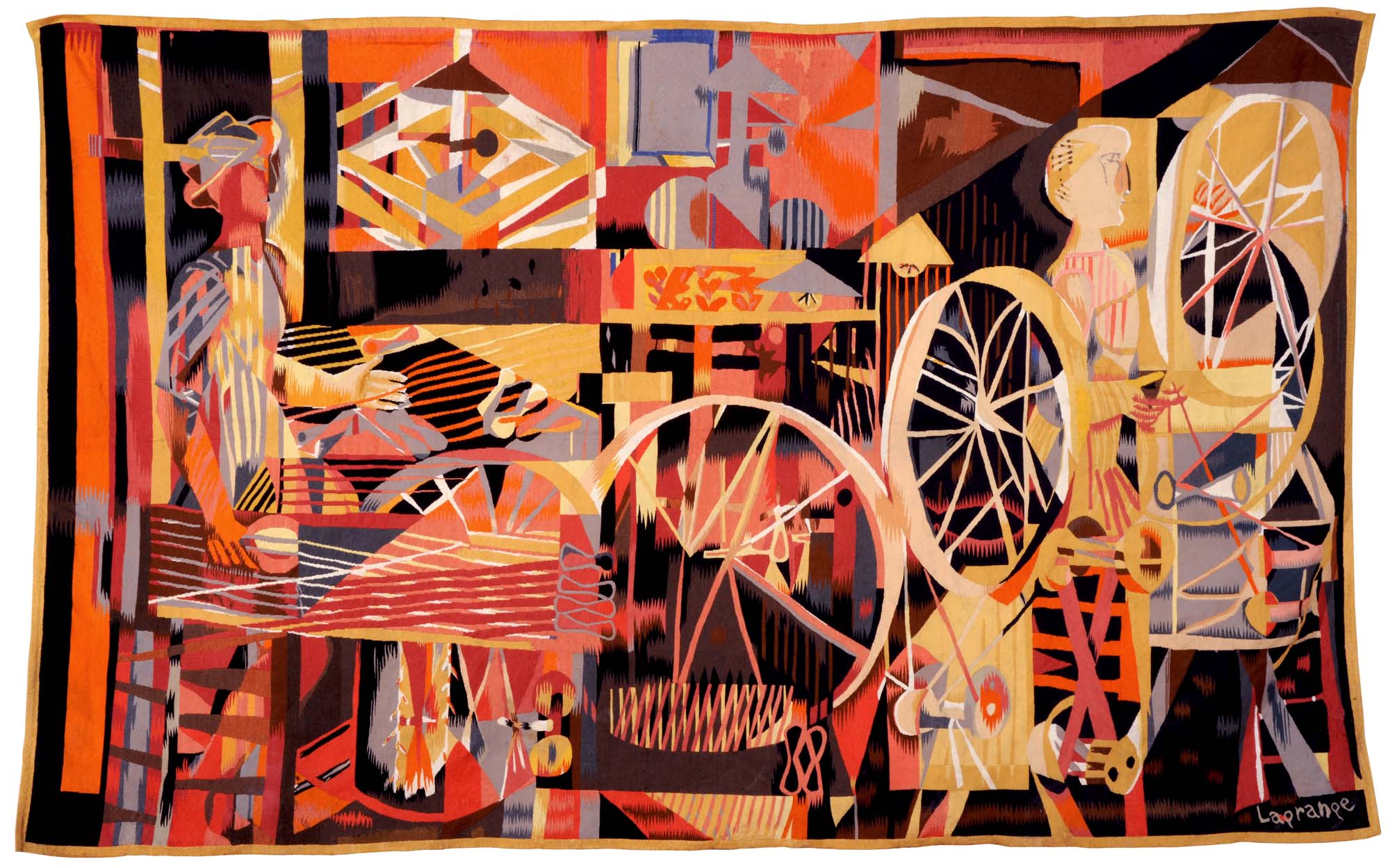Making Tapestries
 Jacques LaGrange, Les Lissiers (The Weavers), designed 1948, woven 1950, cotton and wool. Mobilier national, Paris, France, GMTT-542, © Artists Rights Society (ARS), New York / ADAGP, Paris. Photo: Isabelle Bideau
Jacques LaGrange, Les Lissiers (The Weavers), designed 1948, woven 1950, cotton and wool. Mobilier national, Paris, France, GMTT-542, © Artists Rights Society (ARS), New York / ADAGP, Paris. Photo: Isabelle BideauTapestries are woven on looms by weavers who follow a to-scale design positioned where they can see it. The loom is prepared with columns of undyed warp threads stretched between two parallel bars. Interpreting the design, the weavers interlace dyed weft threads of various colors through the warp threads, completely covering the warp threads in the process. There are two kinds of looms, which are positioned either with the warp threads vertical (high warp) or horizontal (low warp). The weaver sits behind the warp threads on a high-warp loom and leans over the threads on a low-warp loom. In both instances, the weaver works from the back of the tapestry. The manner of shifting the warps to allow for threaded bobbins to interweave among them is done differently between the two types of looms, but the resulting tapestries look the same.
The designs weavers follow are created by artists. Translating an artist’s design into the medium of tapestry is part of the expertise of the craft; this often requires a dialogue between the artist and the head weaver of a project to develop a plan—including density of threads, color palette, and weaving techniques—that will capture the artist’s intent while allowing the weavers to bring their specialized know-how to the individual challenges each design poses.
